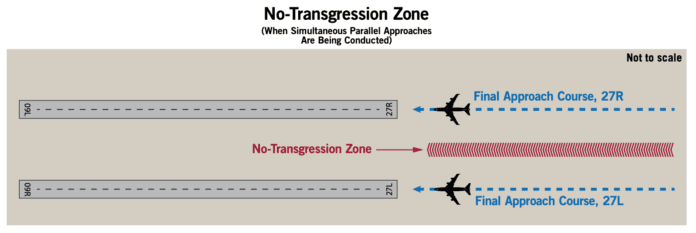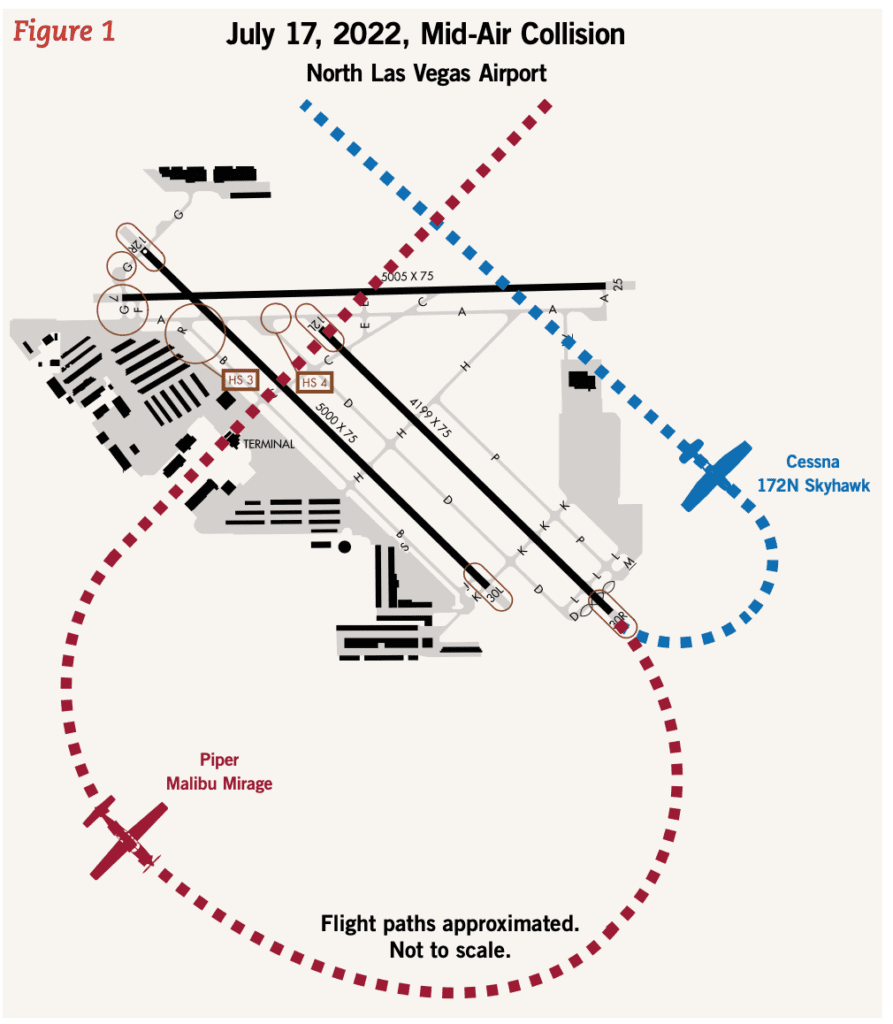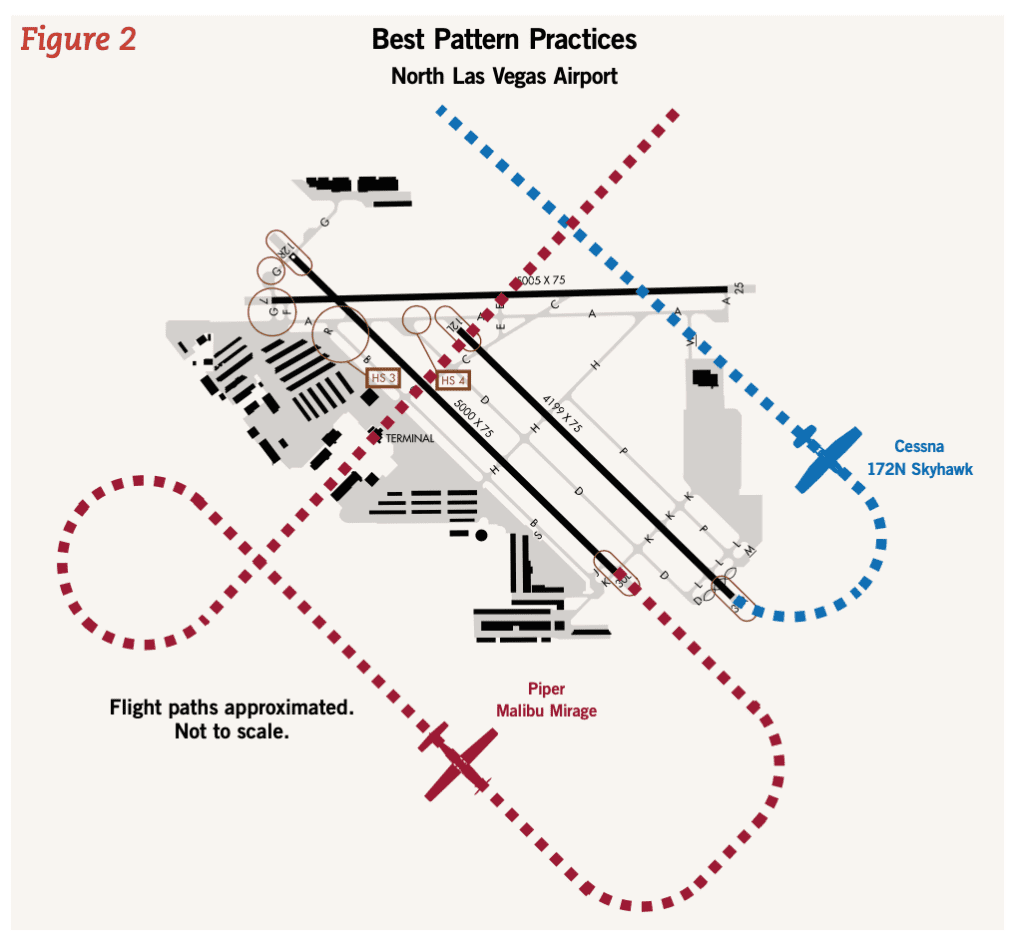
Airports and their runways come in all shapes and sizes, from turf strips lacking any real markings, but with trees at both ends, to massive, busy, complicated affairs like ATL, DFW, JFK or ORD. And pilots are expected to understand and comply with all procedures for operating at them, including taxiways and hotspots, runway intersections, LAHSO (land and hold short operations), and even soft-field takeoffs and landings on unpaved surfaces. As too many close calls involving runway incursions and near-misses remind us, sometimes things don’t go as planned.
A lot of the incursions and near-misses involve single- or crossing-runway events—and pilot error right alongside ATC mistakes. The industry’s conversation about these events is ongoing, but doesn’t often consider a common airport configuration: parallel runways. That’s too bad, especially since that configuration likely was a contributing factor in a recent fatal mid-air.
Side-By-Side
The parallel configuration—which may have staggered or offset thresholds, as well as intersections with other runways—can allow simultaneous takeoffs and landings under most conditions. Such runway configurations are found at airports in all airspace classes, B through G, and they may include turf surfaces, too. They offer operational flexibility a system of intersecting runways can’t. But they are different from other configurations, and require appropriate technique and planning.
Due to their alignment, parallel runways often also facilitate what the FAA calls wrong-surface events (WSEs), i.e., when an aircraft lands or departs, or tries to land or depart, on the wrong runway or on a taxiway. It also applies when an aircraft lands, or tries to land, at the wrong airport. As reported by the FAA, WSEs occur nearly every other day, with approximately 85 percent of wrong-surface landing events involving general aviation aircraft and nearly all of them occurring in daylight visual conditions at Class C or D airports. Additionally, offset parallel runways were found to be a principal cause of WSEs.
Investigation
The fatal mid-air occurred on July 17, 2022, during daylight hours at North Las Vegas Airport (KVGT), a Class D airport tucked in under a tier of the Las Vegas Class B airspace. North Vegas has five runways: two pairs of parallel runways oriented southeast/northwest (12 Left and Right, and 30 Left and Right). A fifth runway, 07/25, intersects the departure end of 30L. Visual conditions prevailed; visibility was 10 sm under clear skies. Wind was from 320 degrees at four knots, favoring Runways 30L and 30R.
The accident airplanes were a 1997 Piper Malibu Mirage JetPROP DLX (PA-46-350P converted to a turboprop), and a 1977 Cessna 172N Skyhawk. The Piper was occupied by a pair of pilots, and it’s not clear from the NTSB preliminary report which was flying and which was monitoring. The Cessna was also occupied by a pair of pilots—a student was in the left seat and an instructor in the right one. The Piper was inbound and approached the airport from the north at 7600 feet msl (airport elevation 2200 feet). Because the Piper was approaching from the upwind side of the airport, ATC cleared the Piper to overfly at midfield, make left traffic and land on Runway 30L. The Piper read back the clearance to land on Runway 30L At the same time, the Cessna was flying touch-and-gos in right closed traffic on Runway 30R.
The instructor pilot in the Cessna requested and was cleared to fly a short approach to 30R, presumably for an engine-out drill. As the Cessna was turning right from base to final on 30R, the Piper had just completed flying a fast 240-degree descending left turn over the airport. Although everyone expected it to roll out on final for 30L, it lined up with 30R instead. Approximately 0.25 nautical miles from the approach end of 30R, the Piper descended rapidly onto the Cessna. All occupants aboard both airplanes were killed. Figure 1, at top right, depicts the runway environment at VGT, along with the approximate flight paths of the two airplanes.

Managing This Risk
Best risk management (RM) practices to mitigate WSEs include reviewing the airport’s parallel runway environment prior to landing, actively listening—making a conscious effort to hear and understand the complete message being spoken—clearly understanding which parallel runway ATC assigned for landing and verifying the landing clearance by reading it back.
Specific RM controls and multiple contributing factors warrant consideration in this accident. Low-altitude circling approach flight maneuvers in the traffic pattern are fraught with hazards. The Piper pilot may have been distracted from lining up on 30L while concentrating on flying the descending left turn over the airport and through downwind and base, which led to overshooting 30L and incorrectly lining up for 30R.
At a non-towered airport, one mitigation for this risk is to fly the FAA-recommended method for entering the traffic pattern on the upwind-leg side of the airport. It calls for crossing over the landing runway at midfield at least 500 feet above pattern altitude while scanning outside for other traffic. When well clear of the pattern—approximately 1.5 to 2 miles—the pilot should continue scanning for traffic, descend to traffic pattern altitude and then turn right to enter the downwind leg on a 45-degree angle to the downwind leg at midfield. This is shown in Figure 2. (As an aside, in my 20-year experience as a flight instructor, I’ve noticed the large majority of certificated pilots are ignorant of this FAA preferred method for entering the traffic pattern from the upwind side.)
Of course, North Vegas is a towered facility. Both the approach controller and the local controller expected the Piper to do pretty much what it did: Cross the airport at midfield and turn left to join the downwind leg directly.
The Piper’s airspeed in the descent and as it maneuvered onto the downwind leg isn’t publicly known at this time. A slower speed would have resulted in a smaller-radius base-to-final turn and given the Piper pilots time to recognize their error. On the other hand, when turning to final from base, 30R would have been the first runway to come into view. The offset threshold for 30L may simply have been ignored.

Electronic Guidance
Regardless of whether the runway you’re lining up for is parallel to another one, a best practice is to use electronic guidance to the runway assigned for landing. At VGT, however, there are no instrument approach procedures for Runways 30L/R. Other electronic guidance is available, though: extended runway centerlines displayed on an EFB or a multi-function display.
It is unclear if the Piper pilots understood the correct runway to use: There may have been a communication failure between them. In 80 percent of wrong-surface landings, pilots made a correct readback, yet still landed on the wrong runway. Why? Expectation bias may provide an explanation. The Piper was based at North Vegas, and perhaps expected 30R for some reason.
Pilots of both airplanes had the responsibility to see and avoid other aircraft, and the Piper pilots utterly failed at this task. Mitigations include eliminating “blind spots” and maneuvering to help see and avoid other traffic. Additional mitigations include listening on tower frequency, or CTAF at a non-towered airport, to help construct a mental map of traffic in the pattern and improve situational awareness, and referring to an ADS-B traffic display to verify where potential traffic conflicts are.
Summary
Consider the potential risks of parallel offset runways for WSEs when approaching for landing. For airports with these runways, RM controls should be applied to mitigate conflicts in the traffic pattern leading to a possible MAC. Even at airports with a control tower, but especially at non-towered airports, pilots must maintain landing runway situational awareness and remain vigilant to see and avoid other aircraft in the pattern.
Michael J. Banner PhD is a flight instructor (CFII, MEI) at University Air Center, Gainesville Regional Airport (GNV), Gainesville, Fla., courtesy professor at the University of Florida in Gainesville and check pilot examiner/instructor pilot at the rank of major in the U. S. Air Force Auxiliary/Civil Air Patrol.



